Running out of time: Port and the SANFL’s separation anxiety
Port Adelaide and the SANFL have been in a “marriage of convenience” for more than 30 years. Is it time to end the relationship? Michelangelo Rucci reports.
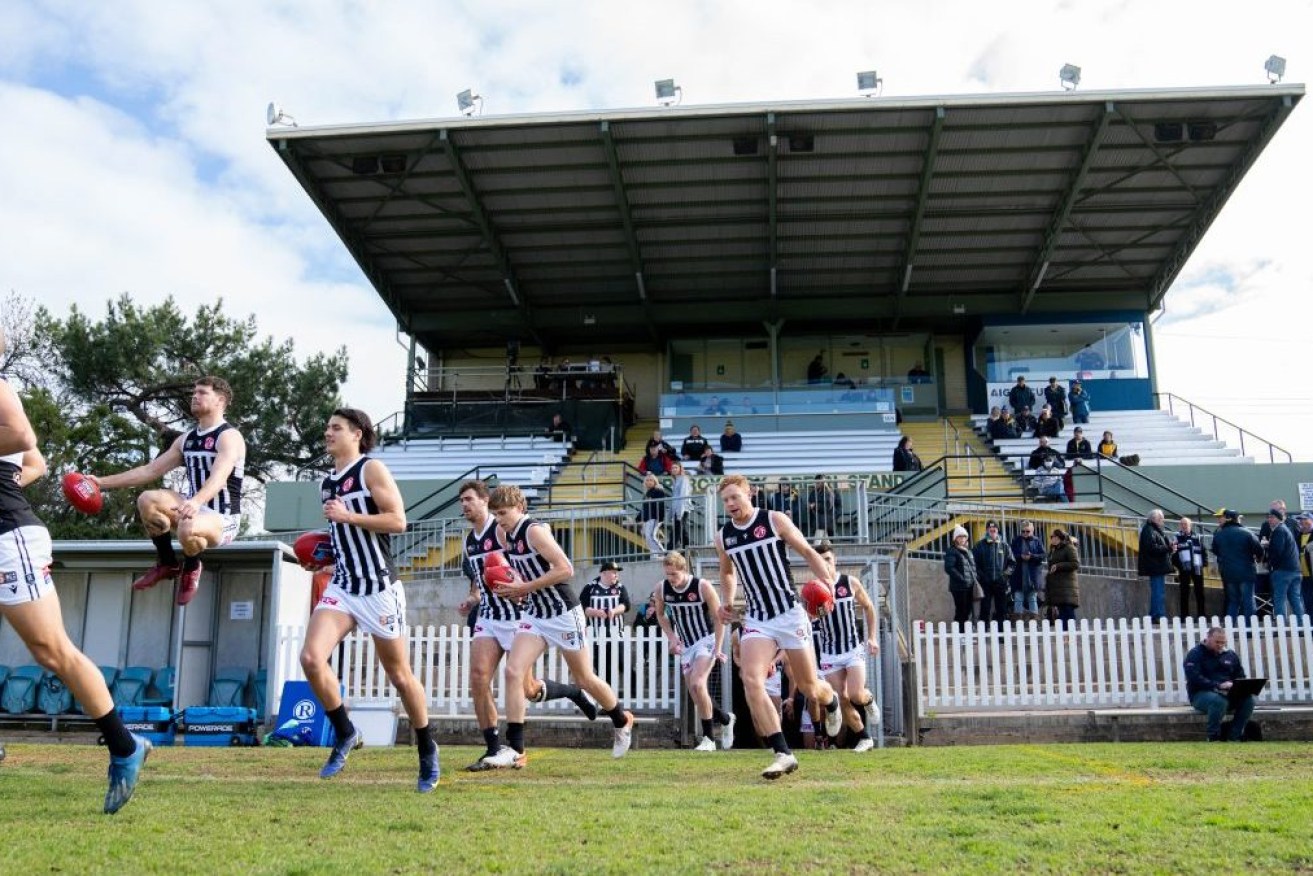
Port Adelaide Magpies at Woodville Oval. Photo: Michael Sullivan
Three times across the past 32 years, the SANFL has had the chance to rid itself of the “Port Adelaide problem”.
Each time, the State league has argued South Australian football had more to lose than gain from cutting ties with the Port Adelaide Football Club.
Now, the pendulum has swung – and there is merit on each side of the uneasy divide for the pair’s final separation.
In a seemingly annual event, Port Adelaide again has put on the agenda its unease with playing in the SANFL while operating in the national AFL competition. No longer does Port Adelaide develop its own SANFL players with a local recruiting zone on the LeFevre and Eyre peninsulas and under-age teams in the State league. These were taken away after Port Adelaide became too big for the SANFL as an AFL club.
Now Port Adelaide has to develop players from all points of the nation, claimed in the AFL’s national drafts.
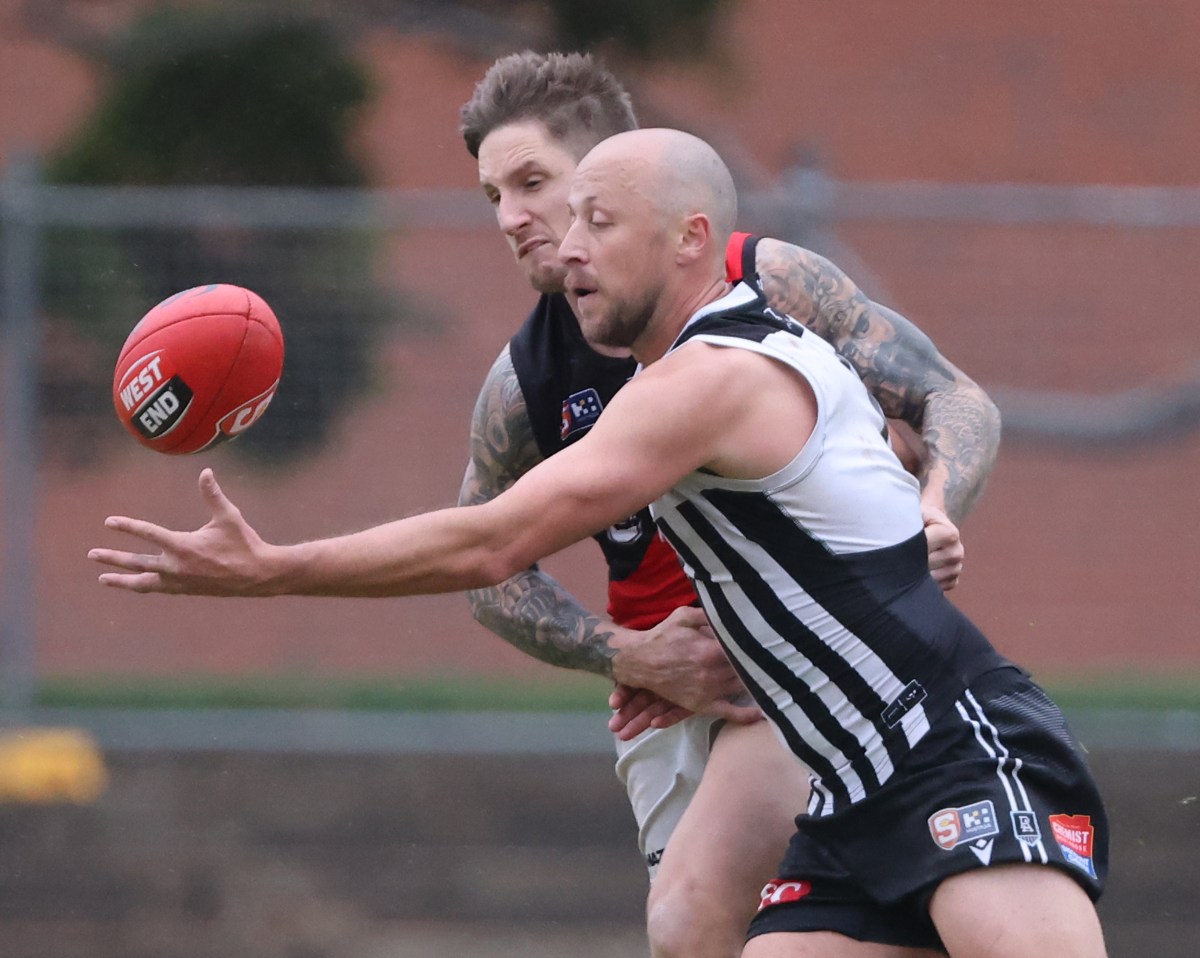
Port Adelaide’s Cameron Sutcliffe and West Adelaide’s Hamish Hartlett contest the ball during a July 16 clash at Richmond Oval. Photo: SANFL/David Mariuz
Port Adelaide’s discontent with the SANFL system flared last season, when SANFL premier Woodville-West Torrens opted to keep Jase Burgoyne, a “next generation academy” apprentice at Port Adelaide in the reserves rather than league team, limiting his development. The SANFL club preferred to invest time in a player who was not about to be lost as a father-son draftee to Port Adelaide.
Chief executive Matthew Richardson a fortnight ago restoked the debate on Port Adelaide’s presence in the SANFL with a carefully worded email to club members.
“Whether the current SANFL model (with Port Adelaide fielding an AFL reserves team) genuinely allows for (player development) is an important strategic topic we are exploring at board level,” Richardson wrote.
Club president David Koch was less cryptic. He ensured “Port Adelaide threatens to leave SANFL” headlines with his follow-up remarks on Adelaide radio last week.
“If we are hindered by these (SANFL) rules, then we have to look at the alternatives (such as the VFL); what is best for us?,” said Koch who last year warned his club would quit the SANFL if it became “too hard”.
“Being a foundation member of the SANFL and a big contributor to its development,” Koch said at the Adelaide Press Club last year, “we want to stay in the SANFL, but (the league by its rulings) makes it very hard for us … very hard.”
And the SANFL, through chief executive Darren Chandler, reminded Port Adelaide it has a contract to play in the State league – of which it is a foundation club from 1877 and most-successful club with 36 flags – until 2028.
“We have no reason to think they won’t be in our competition to 2028,” Chandler said. “And we will work on having rules that allow both the Adelaide Football Club and Port Adelaide Football Club – and every SANFL club – to be as competitive on the most-even playing field we can get.”
South Australian football’s longest – and recently – most-complicated partnership has reached the end of the line. After 145 years, the SANFL and Port Adelaide are better off without each other.
The SANFL in 1990 resisted throwing Port Adelaide out of the State league for the “treason” of breaking ranks to seek a VFL-AFL licence. It simply could not lose the biggest drawcard to its suburban turnstiles.
At the height of the drama on Port Adelaide’s desire to defect to the AFL, the Port Adelaide-Norwood game at Football Park at the start of July drew 21,093 fans. A full round of five SANFL games today – with Port Adelaide playing – does not get half this crowd.
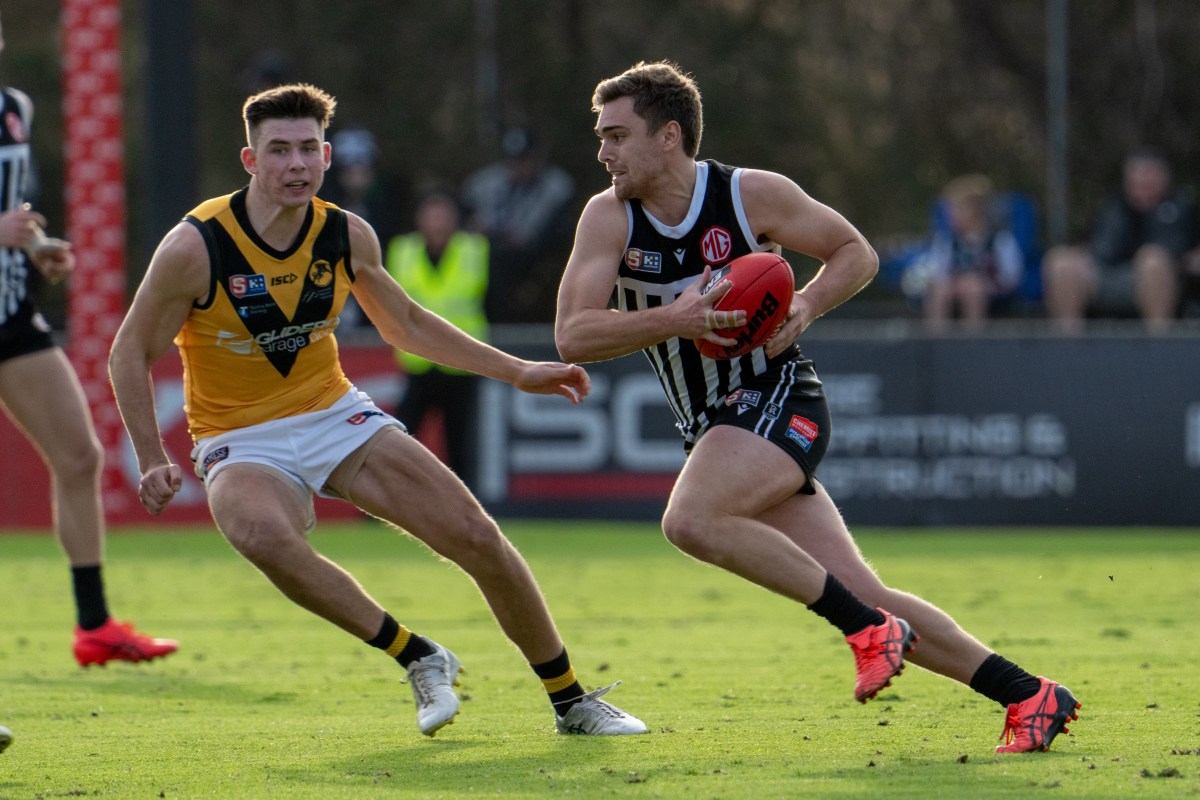
Photo: Michael Sullivan
In 1994, the SANFL turned away from its own demand that whichever club won the rights to the second AFL licence based in Adelaide had to leave the State league. The SANFL wanted to return to an eight-team competition.
Port Adelaide won the licence bid – and the SANFL changed its own rules.
“We thought,” recalls inaugural Port Adelaide AFL chief executive Brian Cunningham, “and we said, ‘We can have the best of both worlds’.
“The SANFL told us, if we wanted an AFL licence we had to set up a Port Adelaide team in the SANFL.
“If we had simply left, there would have been no more Norwood-Port Adelaide games with big crowds at The Parade.”
South Australian football’s longest partnership has reached the end of the line. After 145 years, the SANFL and Port Adelaide are better off without each other
At first, it seemed great.
Port Adelaide played in the 1997, 1998 and 1999 SANFL grand finals, winning its 35th and 36th flags by beating Sturt and Norwood at Football Park before crowds of 44,161 and 44,868 – attendances that have not been surpassed since, even with the SANFL grand final returning to Adelaide Oval.
Port Adelaide has not won an SANFL flag since; its ambitions (and greater focus) are elsewhere, in the AFL.
Port Adelaide no longer is the biggest drawcard in SANFL football. Not even the traditional Port Adelaide-Norwood rivalry can lure the biggest crowd to an SANFL round. The first encounter this season – at Norwood Oval in mid-April – drew 3225 on a Friday night. The next day, Glenelg hosted the Crows reserves with 3349 spectators at Brighton Road.
The rematch at Alberton in mid-June drew just 1644, continuing the trend of Port Adelaide games no longer being the best-attended match of the weekend. Only once has this theme held up this season – in May, at Loxton, with 3756 at the heavily promoted tribute match to local legend, four-time Magarey Medallist Russell Ebert.
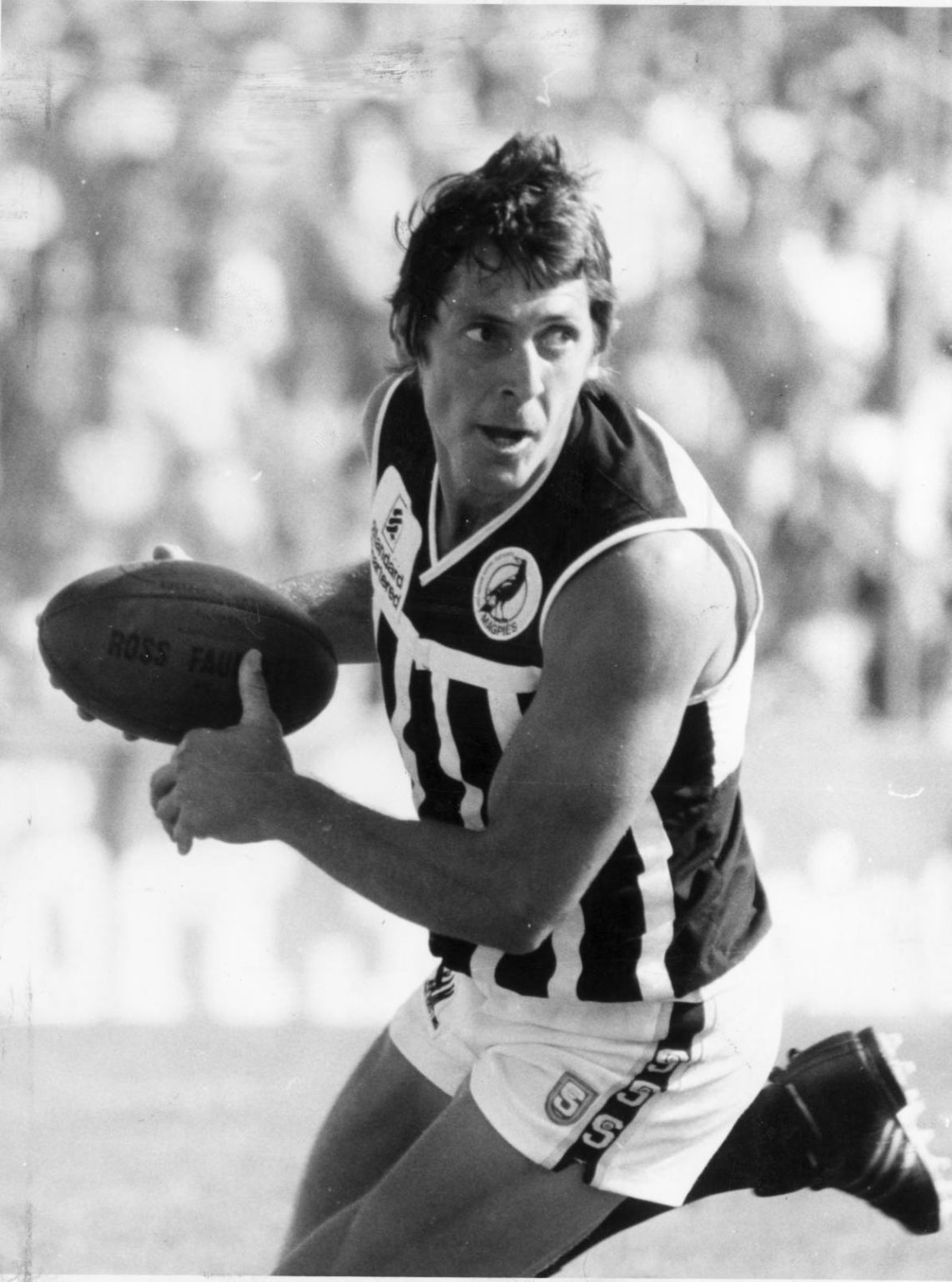
Port Adelaide champion Russell Ebert wearing the famous prison bars guernsey. Photo: PAFC
Only 676 were at Port Adelaide’s most-recent win – against Central District, in a match played directly after the AFL game against league leader Geelong at Adelaide Oval where 30,937 attended. Port Adelaide’s 60,000 members are quite clear in what they will chose – AFL before SANFL.
Cunningham’s “best of both worlds” theme was wishful thinking for Port Adelaide … and the SANFL.
“What we know today,” says Cunningham with the benefit of hindsight, “is we put a splinter through Port Adelaide. We created an identity question – ‘Who is Port Adelaide – the AFL or SANFL teams?’
“At the time, we felt we had no choice. We needed somewhere for our AFL players to play when they were not selected in the AFL team. We would have preferred our reserves team in the SANFL.”
But the SANFL in 1995 ordered complete separation of the “Magpies” in the State league and “Power” in the AFL, to ensure Port Adelaide had no extra competitive advantage on its eight SANFL rivals.
“We could not advertise or promote together,” says Port Adelaide inaugural AFL president Greg Boulton, whose board handed the “Magpies” a $1 million cheque to start a new operation at Ethelton. “We could have no relationship at all. No joint sponsors. No joint merchandise.
“And we certainly could not have the AFL and SANFL players at the same ground. It was a very poor result for the Magpies.”
Boulton’s successor, Brett Duncanson, started his costly agenda for change with the SANFL hierarchy on this front in 2010.
“It was just ludicrous,” Duncanson told InDaily last month.
“I still remember (Magarey Medallist) Scott Hodges deciding to return to Port Adelaide to play in the SANFL team, and one of our top-10 greatest players rolls up at Ethelton, running across a road to collect a football out of someone’s front yard and going past a steel goalpost with no padding. I thought, ‘These guys don’t deserve this! They should be at our spiritual home at Alberton.’ They should not have been disenfranchised.”
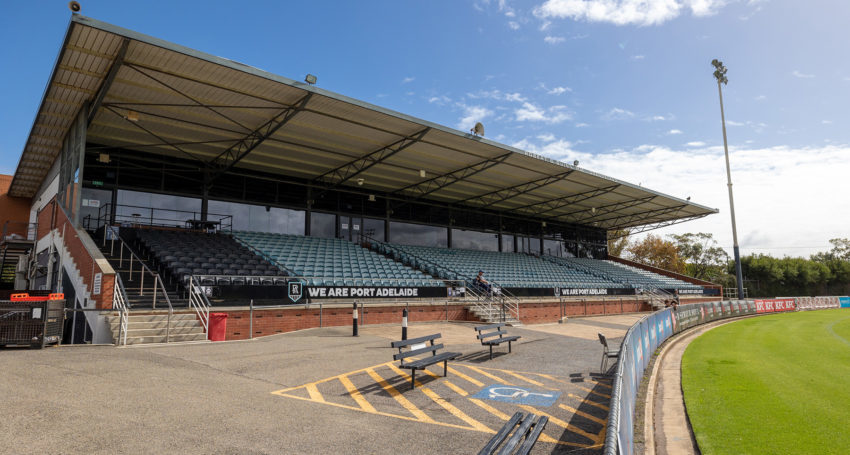
Alberton Oval. Photo: Tony Lewis/InDaily
In 2012, the SANFL relented. Port Adelaide was re-unified under the “One Club” banner. Everyone was back at Alberton … until weekends. Every Port Adelaide AFL-listed player without a Port Adelaide heritage was drafted to an SANFL rival – such as Showdown specialist Robbie Gray to West Adelaide, and key defender Tom Clurey to Glenelg.
“If,” says Boulton, “we had to do it all over again, we would not be in the SANFL.
“Our view then (in 1994) was that a national reserves competition was a long, long way away. So, it was best to keep a foot in the SANFL. We would have preferred a reserves team in the SANFL.”
In 2014, this is exactly what Port Adelaide – and the Crows – scored while having their AFL licences released by the SANFL.
Instead of having their AFL players “farmed” to SANFL teams each weekend, Port Adelaide and the Crows kept their squads together with reserves teams that rebalanced the State league fixture with 10 teams rather than a weekly bye. Despite traditional SANFL fans taking to the mounds with “NO AFL IN SANFL” banners (often confiscated), Port Adelaide and the Crows were allowed to keep their AFL-listed, professional footballers together each weekend in the name of “development”.
But the system has failed – as the Crows noted when Adelaide had a heavy run of injuries in 2018 and won just one of 18 matches. Port Adelaide also has been cut down with limited player numbers this season.
Once upon a time, you had to fight and bleed to get to wear a prison bar jumper. Now they are handed out like lollies
When hit with high injury count, the AFL reserves teams in the SANFL become uncompetitive and meaningless for the development of would-be AFL players, as highlighted by Port Adelaide’s record 126-point loss to North Adelaide at Prospect Oval.
“If we have a healthy list, we should be highly competitive at SANFL level,” says Richardson. “We played North Adelaide with six AFL-listed players and lost by 126 points; we played an in-form Central District with 16 AFL-listed players and won by 23 points.
“The rules under which the AFL clubs compete in the SANFL mean our competitiveness is significantly impacted by the availability of AFL-listed players. This is not a new issue, but has become more acute due to AFL list sizes (reduced from 45 to 42) and the age profile of our list in recent years.
“We’ve made it clear that Port Adelaide values its participation in the SANFL. We are a foundation club with a history of success pre-dating the SANFL, back to 1870.
“We need to ensure we are participating in a competition that best develops our players for our AFL team, and gives us a chance to win and respect our legacy. Whatever structure we exist under it must not compromise our ability to win premierships and develop players.”
Chandler dismisses claims that SANFL rules limit Port Adelaide’s competitiveness in the State league.
“Since 2014 (when AFL reserves teams were introduced),” Chandler said, “Port Adelaide has played in three grand finals in eight years (losing to Norwood, Sturt and Glenelg in 2014, 2017 and 2019). The most of any SANFL team is Woodville-West Torrens with four. So, Port Adelaide is the second-most successful club in that eight-year period by grand final appearances.
“Port Adelaide is very competitive – and very successful – in the SANFL.
“The AFL has given us no indication that it is looking at a national reserves competition. (AFL football chief) Brad Scott told us six weeks ago it certainly is not on the agenda from an AFL perspective. Sure, some clubs are talking about it.(InDaily has confirmed that Sydney led the charge on debating a national reserves competition a recent meeting of AFL clubs).
“The SANFL will be a very strong competition whether there are two (local) AFL clubs, one or even none,” added Chandler. “We are very confident on that – and if there is an AFL reserves competition, we will cope.”
Port Adelaide’s exit from the SANFL would bring an end to the “Magpies” and the weekly airing of the traditional black-and-white “prison bars” jumper. A Port Adelaide reserves team in the VFL would need to be the “Power” and wear the AFL guernsey to avoid more conflict with Collingwood.
The sight of country footballers – some who cannot earn A-grade selection – being called to Alberton to “top up” the Port Adelaide SANFL team has changed the debate for many Port Adelaide diehards.
Former State cricketer and noted Port Adelaide frontman Barry Curtin took to social media to declare he could not tolerate the “prison bar jumper being handed out like lollies” to players called to Alberton to make up the numbers for an SANFL team.
“It’s time the prison bar jumper was put away and only brought out for the Showdown to honour where we come from,” Curtin wrote. “Once upon a time, you had to fight and bleed to get to wear a prison bar jumper. Now they are handed out like lollies. It is doing our brand no good at all.
“I’m sure that a good percentage of former players feel exactly the same way.
“We are in the big league (the AFL) and it was the mighty prison bars that got us there. Let’s not lose that history by tarnishing the jumper in the SANFL.”
Adelaide is a premiership contender in the SANFL this season. But senior coach Matthew Nicks has publicly declared the gap between the AFL and SANFL never has been greater. If Port Adelaide was to jump to the VFL to have greater access to prospective AFL talent, the Crows would be compelled to consider the same move.
Crows football administrator Phil Harper has repeatedly reviewed Adelaide’s options – SANFL or VFL. His reports to the board detailed there was a $400,000-$450,000 “new cost” with air travel to participate in the VFL. The Crows board decided Adelaide would spend that money on its annual licence to play in the SANFL.
This could significantly change if, as expected, the new airline partnership for the AFL takes teams off commercial flights to charter planes. This would make it viable to carry 50 players – rather than 25 – interstate each weekend for senior and reserves games at no cost to the club.
Adelaide certainly would need to abandon the SANFL to be part of a national reserves competition which is now being eagerly pushed by more and more non-Victorian AFL clubs.
Such a competition could be three years away. The new AFL television rights – to be settled before the end of the year with an expected $3 billion deal for five years – will determine if the national league can carry a reserves competition.
How the AFL clubs load up their reserves teams with “talent pathway players” aged between 18 and 21 is a major planning issue. Jase Burgoyne would have been playing AFL reserves last season, rather than SANFL reserves, if Port Adelaide had its way.
The SANFL is not fearful of this talent drain. It believes most of these 18-21-year-olds will return to the SANFL after their AFL apprenticeships and lift standards at the State league clubs.
The SANFL has reassuring experience from the 2020 season, when AFL-imposed COVID protocols forced Port Adelaide and the Crows to step away from the State league, to know it can present a meaningful football competition without AFL-listed talent.
“I have no doubt we could cope with no AFL team in our league,” Chandler said. “But, right now, the best structure for South Australian football includes Port Adelaide and Adelaide being part of our competition.
“If there is change, we will look at every option to make sure that we have by far and away the best competition outside the AFL. We have that now. And we will do everything possible to keep that.”
The greatest fear the SANFL has is in the media landscape.
A national reserves competition would get full television coverage from pay-TV unit, Fox Footy. But will it squeeze the SANFL out of traditional media platforms and make the State league less attractive to would-be sponsors and football fans?
This was the argument once used to keep Port Adelaide in the SANFL. The “Magpies” no longer are a strong selling point for the SANFL.
After 32 difficult years with a “marriage of convenience’ between the SANFL and the Port Adelaide Football Club, the case for complete separation is stronger than ever. And neither party needs to fear going in different directions.
Disclosure: Michelangelo Rucci is an editorial contributor to the Port Adelaide Football Club’s website.




